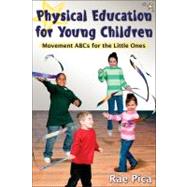
| Preface | p. vi |
| Acknowledgments | p. xi |
| What Your College Courses Didn't Tell You | p. 1 |
| Physical Domain | p. 2 |
| Social-Emotional Domain | p. 6 |
| Cognitive Domain | p. 8 |
| Remember This | p. 10 |
| Maintaining a Successful Learning Environment | p. 11 |
| Beginning With the Body | p. 12 |
| Teaching Methods | p. 17 |
| Keeping Them Off the Walls | p. 24 |
| Remember This | p. 29 |
| Elements of Movement | p. 31 |
| Space | p. 33 |
| Shape | p. 36 |
| Time | p. 37 |
| Force | p. 38 |
| Flow | p. 39 |
| Rhythm | p. 40 |
| Remember This | p. 40 |
| Fundamental Motor Skill Development | p. 43 |
| Acquiring Motor Skills | p. 44 |
| Skills | p. 47 |
| Using the Elements of Movement | p. 59 |
| Remember This | p. 61 |
| Fitness for Young Children | p. 63 |
| Definitions of Fitness | p. 64 |
| Fitness in Early Childhood | p. 65 |
| Fitness Factors | p. 68 |
| Remember This | p. 74 |
| Manipulative Skills | p. 77 |
| Nontraditional Manipulative Skills | p. 78 |
| Introducing Equipment | p. 80 |
| Traditional Manipulative Skills | p. 84 |
| Remember This | p. 88 |
| Linking the Gym With the Classroom | p. 89 |
| Language Arts | p. 91 |
| Mathematics | p. 93 |
| Science | p. 96 |
| Social Studies | p. 99 |
| Art | p. 101 |
| Music | p. 103 |
| Making the Links Stronger | p. 104 |
| Remember This | p. 105 |
| Sample Lesson Plans | p. 107 |
| Resources | p. 111 |
| Glossary | p. 115 |
| References | p. 119 |
| Index | p. 123 |
| About the Author | p. 131 |
| Table of Contents provided by Ingram. All Rights Reserved. |
The New copy of this book will include any supplemental materials advertised. Please check the title of the book to determine if it should include any access cards, study guides, lab manuals, CDs, etc.
The Used, Rental and eBook copies of this book are not guaranteed to include any supplemental materials. Typically, only the book itself is included. This is true even if the title states it includes any access cards, study guides, lab manuals, CDs, etc.